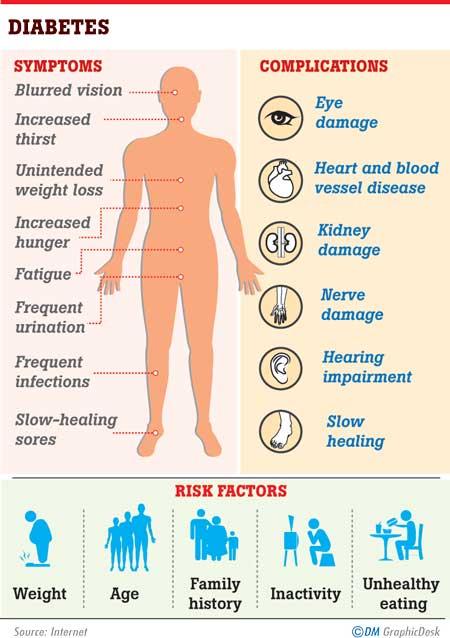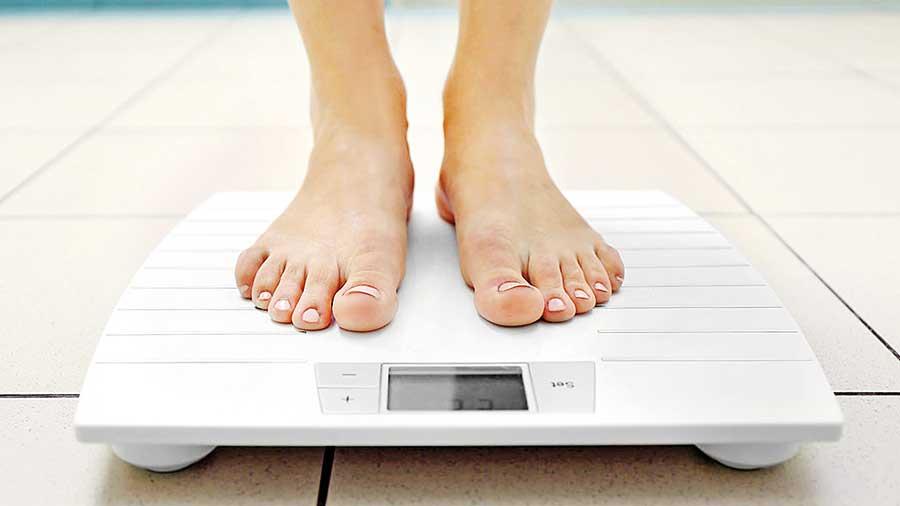08 Mar 2019 - {{hitsCtrl.values.hits}}

 Diabetes is a real trouble maker which can invade your life and reduce the quality of it at a rate. No wonder you are well aware of this potentially life threatening disease and complications it brings about; thanks to tons of information provided by awareness campaigns through community projects and media.
Diabetes is a real trouble maker which can invade your life and reduce the quality of it at a rate. No wonder you are well aware of this potentially life threatening disease and complications it brings about; thanks to tons of information provided by awareness campaigns through community projects and media.
Today on Health Capsule, we are going to shed light on how physical activities can help you control Diabetes and what benefits they would bring in order to protect you from a hundred and one complications which are highly likely along the course of the disease.
“Type 2 Diabetes is a condition which occurs due to the unresponsiveness of body cells to Insulin, produced inside you, thus resulting in high glucose levels in blood. Most of the individuals diagnosed with Diabetes at an early stage with marginal high blood sugar levels initially can be treated without drugs, merely by adhering to sound life style modifications including dietary changes, weight control, physical activities and cessation of smoking” explains Dr. Upul Madahapola, Registrar in Exercise and Sports Medicine, Teaching Hospital, Kandy. According to latest data, 75% of hospital deaths, occurring in Sri Lanka are due to noncommunicable diseases where Diabetes and Diabetes related complications account for 7%which is quite significant, due to the fact that it can definitely be controlled before becoming fatal, by adhering to right controlling factors and medicine.
Individuals, diagnosed with Diabetes should regularly be followed up by a qualified doctor where the disease control should be evaluated by monitoring fasting blood sugar, post prandial blood sugar tests and HbA1C-which assesses the long term control of the disease progression. These tests will also be beneficial in identifying the complications as earlier as possible, thus being able to be addressed promptly before leading to uncontrollable states of deadly outcomes. Self-monitoring of blood glucose levels (at home using a glucometer) can also be helpful, so that you can have an idea about your own daily glucose consumption and control where studies show how fruitful this practice is when it comes to improved health outcomes.
The impact of physical activities on Diabetes
Losing body fat will make your fat cells more sensitive to insulin where adequate physical activities will ensure both weight loss (loss of fat) and increased sensitivity of muscle cells to insulin.

“Exercise is Medicine® (EIM), a global health initiative managed by the American College of Sports Medicine (ACSM) highlights how effectively the right prescribed dose of physical activity can reduce the incidence of Type 2 Diabetes by almost 60% in people at risk and prevent or delay the progression of the disease not only by reducing the levels of blood glucose and proportion of body fat but also by bringing down the risk of heart disease, high blood pressure and high cholesterol levels which act as risk factors for type 2 Diabetes” says Dr. Madahapola.
This de novo discipline of combining a prescribed set of customized exercises along with drug treatment is extremely effective when it comes to the control of non-communicable diseases like type 2 Diabetes yet should be carried out by qualified health care professionals as the risk of other existing co-morbidities, hidden behind the scenario can bring about adverse effects, if not dug properly into the patient’s past history of illnesses, medicines used and family history.
“We always make sure to carry out a complete evaluation and risk analysis before prescribing patients with exercises, they should be engaging in combination with other medication. The type, intensity, frequency and duration of these physical activities would vary from one individual to another and usually involves Aerobic and Muscle strengthening exercises”
Let’s get started
We talked about Aerobic exercises and Resistance Exercise programmes in one of our previous Health Capsule segments and the same principles are applied here.
Aerobic exercises
“When a non-diabetic person engages in moderate-intensity exercise, the increased level of glucose uptake by cells is matched by an equal increase of glucose production by the liver with a final out-come of unchanged blood glucose levels except during prolonged, glycogen reducing exercise. In contrast, individuals with type 2 diabetes engaging in similar exercises, have a higher potential in utilizing their blood glucose levels by muscles more than the glucose production by the liver, thus resulting in a reduced level of blood glucose” explained Dr. Madahapola.
The recommended set of exercises include, at least 150 minutes per week of moderate - intensity aerobic activity, 75 minutes of vigorous aerobic activity or a combination of both as prescribed by your doctor.

Resistance exercise programme
Do resistance training (weight lifting) at least 2 days per week. Plan a ‘rest day’ between sessions. Make sure to exercise at a moderate level and don’t go to extremes as it can make a huge negative impact on your desired goals-which is to improve the strength and muscle endurance so that your daily activities will be less stressful.
Those who like engaging in activities at home without attending gym sessions can use lighter weights, resistance bands or your body weight as the resistance-with push-ups or sit-ups.
Exercise Precautions for Type I and Type II Diabetes
Having all these information on Type 2 Diabetes and the importance of physical activities, kept in your mind, it is always better to be mindful on what sound health really is! According to WHO, Health is a state of complete physical, mental, social and spiritual well-being and not merely the absence of disease or infirmity, so always make sure to live a calm and stress free life to best you can and gain the help of modalities like Yoga and meditation in order to achieve the desired life of your dreams not only free of diseases but also of disturbances, struggles and external pressures.
22 Dec 2024 22 minute ago
22 Dec 2024 2 hours ago
22 Dec 2024 2 hours ago
22 Dec 2024 5 hours ago
22 Dec 2024 5 hours ago